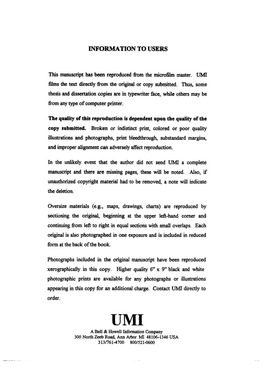| dc.contributor.author | Swensen, Eric Edmond. | en_US |
| dc.date.accessioned | 2013-08-16T12:29:38Z | |
| dc.date.available | 2013-08-16T12:29:38Z | |
| dc.date.issued | 1997 | en_US |
| dc.identifier.uri | https://hdl.handle.net/11244/5485 | |
| dc.description.abstract | Sixteen female subjects performed a simulated industrial hand grasping task in twenty-minute sessions conducted over four weeks. Each subject was required to exert a grasping force of 30% of her MVC for five seconds. Travel distance was 0.25 inch to simulate activating the trigger on a power tool. The subject then relaxed her grip for a rest period whose length could be adjusted at two-minute intervals. These subject-determined rest intervals were recorded at the end of the twenty-minute test session. Test sessions were conducted at seven-day intervals. | en_US |
| dc.description.abstract | Test-retest reliability of subject-determined rest times revealed a high correlation (0.92) between the first and second experimental session. Test-retest correlations of rest time were 0.94 for the wrist neutral condition and 0.88 for the 45$\sp\circ$ wrist flexion condition. Sensitivity analysis of the correlation values revealed that the correlations were stable across the entire sixteen subject population. Analysis of the mean MVC data showed that the mean MVC increased from Session 1 to Session 4 with no statistically significant difference among Sessions 1, 2 and 3, and Session 1, 3, and 4. Mean pre-session MVC data were found to be greater than mean post-session MVC values and this difference was statistically significant. Analysis of rest time data revealed that wrist angle and subjects were significant. The 45$\sp\circ$ wrist flexion condition produced greater mean rest times than the wrist neutral posture. Maximum acceptable frequency (MAF) was significantly affected by wrist angle and individual subject differences. Subjective difficulty ratings were not statistically significant. | en_US |
| dc.description.abstract | Several researchers have used the psychophysical method of adjustment to study hand grasping tasks. However, these studies have not reported the effect of elapsed time upon the recorded psychophysical values. The objectives of this study were (1) to investigate the test-retest reliability of psychophysical evaluations of subjects using the psychophysical method of adjustment for a repetitive power hand grasping task, (2) to verify a methodology for studying and quantifying the exposure limits to CTD occupational risk factors for hand-wrist repetitive tasks as proposed by Abu-Ali (1993), and (3) to determine psychophysically the effect of exertion time on the subject-determined flexion grasping frequency and rest time. | en_US |
| dc.format.extent | x, 171 leaves : | en_US |
| dc.subject | Carpal tunnel syndrome. | en_US |
| dc.subject | Overuse injuries. | en_US |
| dc.subject | Hand Wounds and injuries. | en_US |
| dc.subject | Psychophysics. | en_US |
| dc.subject | Health Sciences, Occupational Health and Safety. | en_US |
| dc.subject | Engineering, Industrial. | en_US |
| dc.title | Reliability of a psychophysical method for evaluating repetitive power hand grasps of females. | en_US |
| dc.type | Thesis | en_US |
| dc.thesis.degree | Ph.D. | en_US |
| dc.thesis.degreeDiscipline | School of Industrial and Systems Engineering | en_US |
| dc.note | Source: Dissertation Abstracts International, Volume: 58-03, Section: B, page: 1467. | en_US |
| ou.identifier | (UMI)AAI9726714 | en_US |
| ou.group | College of Engineering::School of Industrial and Systems Engineering | |
